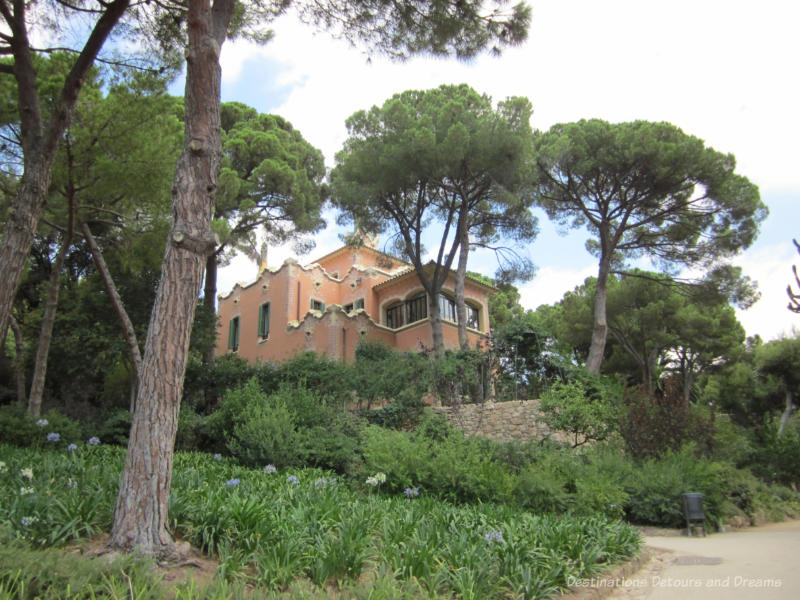Barcelona has no shortage of works by Antoni Gaudi, the leading architect of Catalan 'modernisme,' each showing a different aspect of his life and work as an architect. There are houses, there's Sagrada Familia, and more.
Gaudi's familiar Sagrada Familia, now with new towers under construction, seen from high above in Park Guell
But only one of his projects is a park, and a glorious one at that, but it was never meant to be. Park Guell, named for his patron Eusebi Guell, is essentially a monumental real estate project gone south, and repurposed as a park only years later.
Almost every guide, webpage or ad you'll see about the park, focuses on the fantasy structures at the lower entrance to the park; they are what you think of when you think of Gaudi, right?
But the original plan for what was supposed to be an elite subdivision on the side of Carmel Hill divided the tract of nearly 30 acres into 60 triangular house lots, with roadways connecting them and hopefully leaving little to interfere with the magnificent views over the city below.
The monumental area of the park is sort of like a front door and lobby. Beyond it, the hilly landscape supports both seemingly natural forest areas, and areas where Gaudi built the roads, retaining walls, stairways and more using forms taken from nature, and often almost disguised as natural.
George G used this picture to identify this week's One-Clue Mystery. Congrats!
Thirty acres doesn't seem like a lot, but because its roads and paths wind around on the hilly site and there are no large open fields, and because of its vast vistas out over the city, it feels large.
And, with paths that often slope gently, it's easy to be surprised at how high or how low you've gotten. We spent over two hours just walking around the park and never had any sense we were coming to the end... until we were!
It's hard to imagine that Gaudi didn't mean it that way, stacking elements on top of each other: The terrace, with its sea-serpent-shaped mosaic benches is actually the roof of the columned Hippostyle Hall that rises from the entrance.
The Hippostyle Hall was meant to be a public market place for the residents
The park only came about after the real estate plan came to its end in 1914 after ten years of work, primarily through a lack of buyers who wanted to meet Guell's conditions: pay a premium price for a lot they could only build on one-sixth of on the side of a mountain with limited roadways and transportation.
Guell moved into a house nearby, but only two houses were ever built as part of the development. One, which was built as a sample to show prospective buyers was eventually bought by Gaudi, who lived there with his family from 1906 to 1926. Ironically, neither of the houses was designed by Gaudi. Gaudi's is now the Gaudi House Museum, with many original works.
 The only two houses in the development; Gaudi's is the pink one.
The only two houses in the development; Gaudi's is the pink one.
The city bought the property from Guell's estate in 1922 and began adapting it to park use, retaining Gaudi's features and plans. It opened in 1926, the year Gaudi died. Along with a number of Gaudi's other Barcelona works, it's part of a Unesco World Heritage Site.
Until 2013, access to the whole park was free, but as part of a seemingly unstoppable trend toward adding private operators and fees to everything, the monumental areas of Park Guell were turned over to a 'non-profit' agency that collects a fairly stiff fee from visitors and limits numbers. The wooded areas are still free, but not as easily reached now that the main entrance to the park is in a fee-paid area.
The Tower of Three Crosses (only two here) marks the very top of the park.
Back to the monumental entrance, with stairway leading up toward the Hippostyle and terrace, and with the most famous park denizen of all: The mosaic salamander.
As grumpy as I can be over fees to enter public parks (and it's a €10 fee), I'd recommend it and I'd go again. Even in that small space, there's much more to discover!

Comments (0)